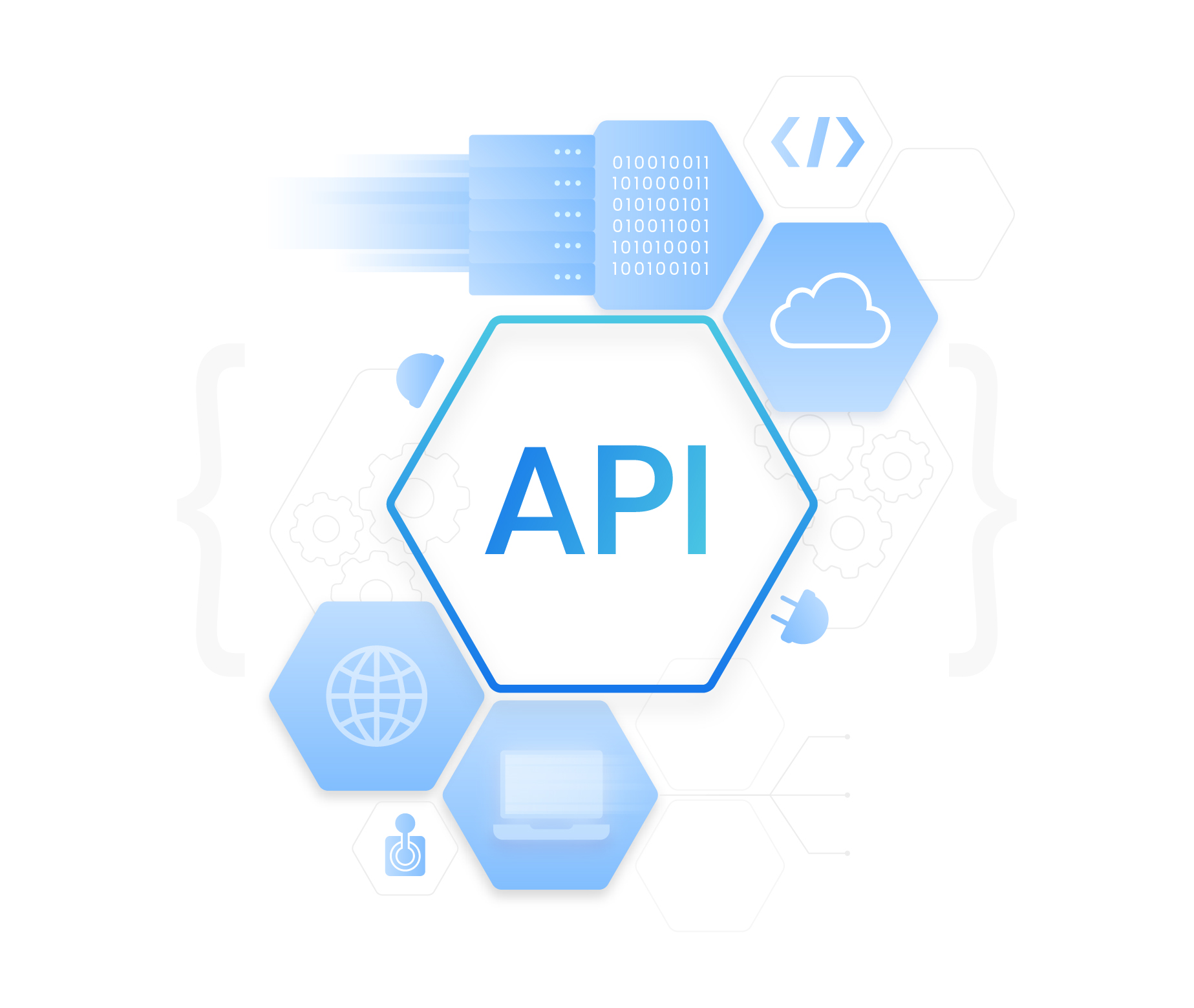Blog
Navigating the Consumer Data Right (CDR) - A roadmap for asset finance brokers
By NETSOL Technologies, on July 3, 2025
Explore how Australia’s Consumer Data Right (CDR) and Open Banking are transforming asset finance. Learn how brokers can leverage real-time data, staying competitive.

In the rapidly evolving landscape of asset finance, staying ahead of regulatory changes is essential. For brokers in the Australian market, one such shift that's gaining significant traction is the Consumer Data Right (CDR), a broad regulatory framework designed to give consumers greater control over their financial data. The first and most widely recognized sector under CDR is Open Banking, which specifically focuses on sharing banking data securely and efficiently.
Understanding both Open Banking and the broader CDR framework is crucial for asset finance brokers, as these initiatives change how data is shared and create new opportunities and challenges within the industry.
Open Banking: The gateway to CDR adoption
Open Banking allows consumers to share their banking data with accredited third parties safely and securely. This transparency empowers consumers to access better financial products and services tailored to their needs.
While Open Banking is often the more familiar term in the Australian market, it is important to recognize that it represents the initial phase of the wider Consumer Data Right framework, which will extend to other sectors such as energy, telecommunications, and non-bank lending products in the near future.
The state of the CDR adoption - Where do we stand?
The CDR has been touted as a game-changer for many industries, including asset finance.
According to the Australian Banking Association's (ABA) Consumer Data Right (CDR) Strategic Review released in July 2024, only 0.31% of bank customers had an active data-sharing arrangement under the CDR by the end of 2023. This indicates a significant gap in consumer adoption of the CDR, highlighting challenges in its implementation and uptake.
In response to these adoption challenges, the Australian Government introduced significant rule changes to the CDR framework in November 2024. These amendments simplify the consent process by allowing consumers to bundle multiple consents in a single action, making it easier and less confusing for consumers to share their data.
Challenges and opportunities for asset finance brokers
1. Consumer engagement with CDR
Although consumer adoption of CDR remains gradual, this does not pose a direct obstacle for brokers. Instead, it presents an opportunity for brokers and their technology partners to educate consumers on the security and value of sharing data, fostering greater awareness and gradually increasing engagement over time.
2. Increased costs of compliance
For asset finance companies, keeping up with the evolving regulatory requirements of CDR is a significant challenge.
An independent review commissioned by the Australian Treasury confirmed that the costs of implementing the Consumer Data Right (CDR) in the banking sector have significantly exceeded original regulatory estimates. The review, conducted by Heidi Richards, found that the compliance costs for implementing the CDR were substantially higher than initially anticipated.
Despite these factors, the adoption of CDR is expected to grow, particularly as the framework extends to non-bank lending products by 2026. This expansion will provide brokers with access to richer data sets, which, when coupled with the right technology partnerships, can enable more accurate loan assessments and the development of personalised financial solutions.
CDR arrangement profile
How CDR can benefit asset finance brokers
While the adoption rate has been slower than expected, asset finance brokers who embrace CDR will unlock several key advantages that can dramatically enhance their services. Below are some of the most compelling benefits:
1. Real-time data access for better decision-making
By using CDR, asset finance brokers can gain real-time access to financial data from a variety of sources, including consumers’ bank accounts, credit reports, and other assets. This not only improves the accuracy of loan assessments but also enables brokers to offer faster approvals. Embracing responsible AI workflows preserves human judgement while cutting out manual data checks.
NAB's digital-only bank, UBank, has implemented technology that allows home loan applications to be completed in as little as 20 minutes, with applicants able to track the progress of their applications in real time.
This time-saving benefit is essential for brokers competing in an environment where speed is increasingly linked to customer satisfaction and retention.
2. Personalisation of financial products
CDR empowers brokers to offer highly personalised asset finance solutions by using granular data to assess clients’ financial profiles and predict their needs more effectively. Personalised offerings not only improve client satisfaction but also enhance retention rates.
According to Accenture Global Banking Consumer Study 2025, based on 49,300 retail-bank customers surveyed in 2024, 72% of customers say that the level of personalisation they receive influences which bank they choose.
3. Automation for streamlined operations
The integration of CDR into asset finance platforms can automate many manual processes, including data collection, verification, and risk assessment. This automation not only reduces the potential for human error but also frees up valuable time for brokers to focus on high-value tasks such as relationship building and deal negotiation.
According to Twimbit State of Australian Banks 2024 report, across Australia’s six largest banks, automation-led digitisation lifted cost efficiency by 4.2% in FY 2023, and the three banks that have scaled workflow automation kept expense growth below 6%.
4. Level playing field
CDR is set to level the playing field within the leasing and finance industry by providing smaller companies and institutions with equal access to markets traditionally dominated by big banks. This democratization of data access helps break monopolies and fosters competition.
Key risks to consider
• Data privacy and security
While CDR mandates strict accreditation and security standards, brokers must remain vigilant, drawing on lessons from recent cyber-security incidents, to protect consumer data from breaches or misuse.
• Regulatory compliance
Continuous monitoring of evolving regulations and maintaining compliance is critical to avoid fines and operational disruptions.
Steps for asset finance brokers to leverage CDR
To ensure they stay competitive, asset finance brokers must proactively embrace the opportunities presented by CDR. Below are some actionable steps that brokers can take:
• Educate consumers on data-sharing benefits
The first step is to demystify the data-sharing process for consumers. By educating clients on how sharing their financial data can lead to more accurate, faster, and customised financial products, brokers can begin to drive higher engagement with CDR.
• Invest in technology partnerships
Working with tech providers that offer CDR-compliant platforms, such as NETSOL Technologies, allows brokers to integrate data sharing directly into their operations, automating many aspects of the loan lifecycle. Broker portals must be optimised for the seamless exchange of data across platforms to ensure compliance while improving efficiency.
NETSOL’s Link platform connects providers across the end-to-end point of sale (POS) for auto and equipment leasing, finance, and credit businesses. As CDR leverages big data through APIs, Link’s API-first, SaaS-based, and highly configurable architecture allows seamless integration with lenders and partners.
• Prepare for regulatory changes
Given the complexity of CDR regulations, brokers should prioritize maintaining robust compliance frameworks. Staying ahead of regulatory changes will not only avoid costly fines but will also ensure that brokers are prepared for the upcoming extensions of CDR, including non-bank lending.
• Monitor and analyze data trends
Using data analytics tools, brokers can track the impact of CDR on customer behaviour, operational performance, and loan processing times. This continuous monitoring will allow brokers to refine their strategies over time.
The CDR readiness maturity curve- From awareness to data driven advantage
Future outlook 2025-2030: From data sharing to data advantage
By 2030, CDR will evolve from a compliance initiative to a competitive differentiator. As data sharing expands to non bank lenders (2026) and energy & telco verticals, brokers will have a holistic, permissioned view of a customer’s financial and asset portfolio. Expect three structural shifts:
1. Instant, API driven verifications
Open banking APIs will eliminate PDF statements and manual uploads. Broker platforms will pull live income, spending, and asset valuation feeds, shrinking time to fund from days to minutes.
2. Predictive credit modelling
With rich longitudinal data, brokers will employ AI models that forecast default probability and residual value risk, enabling proactive product tweaks before origination.
3. Embedded finance ecosystems
Dealership DMS, broker portals, and lender LOS will interoperate via CDR standards, turning brokers into orchestration hubs rather than intermediaries.
Early adopters will capture a data network effect; each approval adds behavioural data that sharpens pricing and cross sell accuracy. Those waiting until mandates tighten risk ceding margin and market share to data native rivals.
Conclusion
Navigating the Open Banking and Consumer Data Right (CDR) effectively requires strategic investment in technology, data security, and consumer education. Although current consumer adoption rates are still evolving, asset finance brokers who proactively prepare for and embrace these data-sharing opportunities will be better positioned to offer personalised, efficient, and competitive financial solutions.
The government’s commitment to advancing the CDR framework, with a focus on consumer benefit, streamlined compliance, and innovation, signals a transformative era for Australia’s financial ecosystem. Brokers adopting a forward-looking approach today can gain a significant advantage as Open Banking and CDR continue to mature and expand into non-bank lending and beyond.
NETSOL Broker Portal – Empowering brokers in the CDR era
NETSOL Technologies is committed to supporting asset finance brokers as data-sharing ecosystems continue to mature under CDR and Open Banking. Our Broker Portal is designed with a future-ready architecture that streamlines and optimises the asset finance lifecycle, incorporating features such as real-time data access and workflow automation.
By leveraging NETSOL’s API-first, SaaS-based architecture, brokers can maximise the value of enriched, permissioned data, boosting operational efficiency and delivering superior customer service in the new data-driven finance landscape.
Related blogs

Blog
Future-proofing financial operations: Why API integration is key to scaling vendor partnerships

Blog
The future of wholesale finance: Why mobile technology is transforming OEM-dealer relationships

Blog



